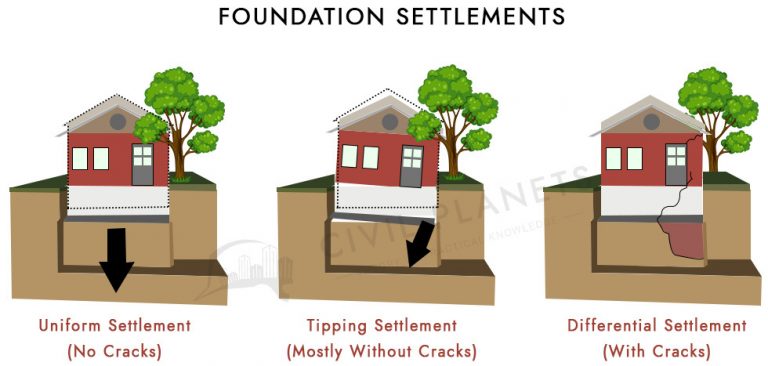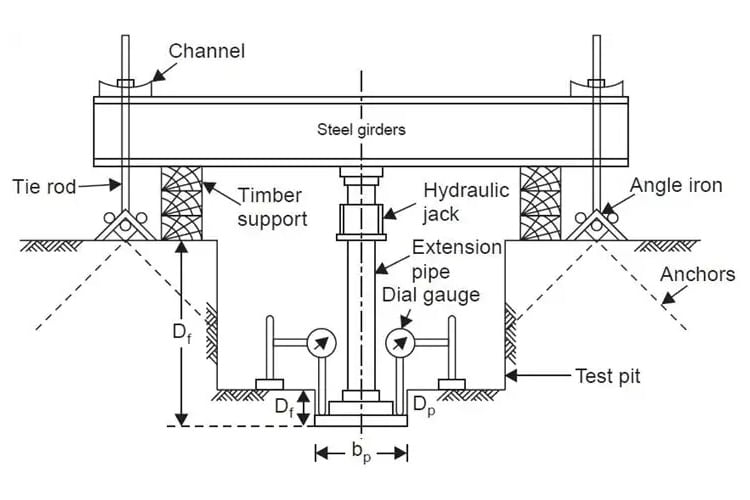The aggregates are classified based on shape, size, density, Geographical Origin. We have discussed the same in detail on the classification of aggregates. Based on their transportation and origin, they are classified as transported soil and residual soil.
What is transported soil and residual soil?
The deposited soil transported from one place to another place by the natural forces wind, water & glaciers is called transported soil.
The soil which is deposited in its original parent rock is called residual soil.
Difference between residual soil and transported soil
| Transported Soil | Residual Soil |
| It is transferred from one place to another place. | It is deposited near its parent rock. |
| Different parent material has been mixed. | The parent material is the original rock. |
| The soil mineral composition will vary. | Mineral compositions are the same as the parent rock. |
| Weak soil grain particles are omitted in soil transportation. | It contains different grain particles. |
Types of Transported Soil
The following types are the possibility of soil transportation!.
- Soil transported by gravitational force
- Soil transported by running water
- Soil transported by glaciers
- Soil transported by wind
By Gravitational Force
You may often see in hill areas; the soil falls on the road path from adjacent rocks!. It happens due to the gravitational force.
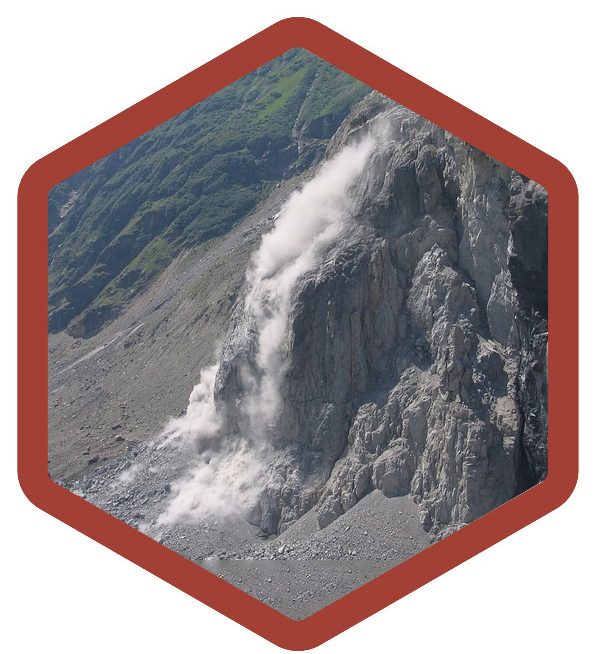
That soil contains different size & shape of grain particles. The transportation is very less because there are no external forces to move the soil in long.
The soil transported by the gravitational force is called colluvial soil.
By Running Water
Major soil transportation happened with the water flow only. Both coarse and fine soil particles transported by the streaming of water.

The water flows over the surface of mountains and erodes the rock. The amount of soil transportation depends on the velocity of water flow.
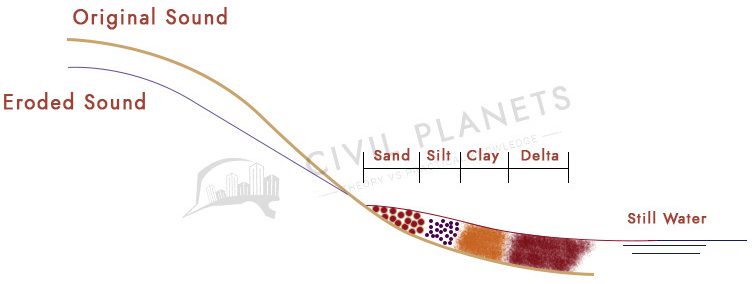
- When the velocity of water is high, then the large size of soil particles will be disintegrated and moved from one place to another.
- When the velocity of water slowly decreases then the coarse particles will settle down at distinct points. Remaining fine particles are deposited in the riverbank. Finally, the water gradually ended in the sea.
Alluvial soils are deposited near the river estuary. The dirt accumulated near the lake is called lacustrine deposits, and the soil deposited near the seashore is called marine deposits.
By Glaciers
The large size of glaciers is melting due to global warming. It becomes a high-velocity flow of water which contains a different size & shape of soil particles.

The soil deposits made by the glaciers melting is called till, and the soil deposited by the glaciers is called glaciofluvial soil. The glaciofluvial soil contains good shear strength, and it can be compact as required density.
By Wind
The soil deposition by high-velocity wind force is called aeolian soil.
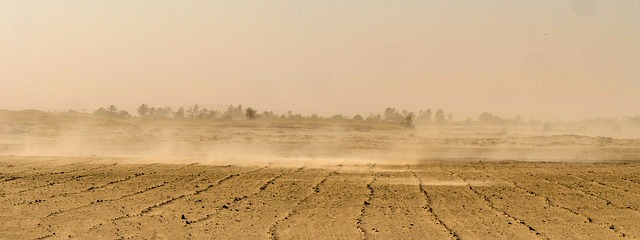
The aeolian soil has been classified as two types.
Dune – In waterless areas like desert zones, the soil is deposited in the form of dune by the substantial wind force. Dunes seem to like coarse sand having uniform shape & sizes. The bearing capacity of dune soil is low.
Loes – The soil transported in very long distances is mostly silt or clay soil. Loes soil has high permeability and low density.
Apart from the above four soil transportation types, the soil can be transported by multiple natural agents. The soil which is deposited by gravity force can be transported either by water or air.
The possibilities are endless. Transported soil can be subjected to one or more of the above transportation.
Happy Learning 🙂

